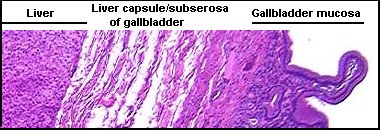Hey everyone! This week's material isn't too bad. I think there are
3-4 new structures in the entire lesson. Take advantage of the lighter
lesson to review, review, review. The final is just around the corner
and it is not something that you'll want to cram for. In this post, I'm
just going to highlight the new things we taught you guys this week and a
few other important points. So here goes:
-You'll
notice that this week we taught you guys the muscle layers surrounding
the esophagus. It's pretty intuitive though since it is part of the GI
tract: Inner circular, outer longitudinal.
 |
| Always keep in
mind the relative anatomy of the structures we're learning about! Which
is the trachea? Which is the esophagus? What would it look like if a
pic of the esophagus included part of the trachea? |
-Make sure you know how to distinguish between the
different parts of the small intestine: duodenum (Brunner's Gland),
Jejunum (nothing remarkable), Ileum (Peyer's Patches) [pictures below in
that same order]



-One
of the new things this week: MUSCULARIS MUCOSA. You can find it all
over the digestive tract and it is a small muscle layer separating the
mucosa and the submucosa.
 |
| 5=muscularis mucosa, 6=submucosa, 4=lamina propria. Where in the GI are we? |
-Gallbladder - New this week too! Has evaginations
and the simple columnar epithelium, but it doesn't have the striated
border like the small intestine. Pretty unique looking. You can often
see the liver in the slide as well (See the second pic for an example).


-Liver
- We have obviously talked about this organ before, but we added
hepatic sinusoids this week (histo=simple squamous). The sinusoids are
just the white spaces between the hepatocytes (which are often
binucleated). Von Kupffer cells are the phagocytic cells (mod. simple
squamous) that sit in the sinusoids.
 |
| Lighter spaces=sinusoids, darker cells in sinusoids=Von Kupffer cells |
-Know the trends for goblet cells: increase down GI
tract (most concentrated in colon), decrease down respiratory tract
(most concentrated in trachea).
-New this week for respiratory:
Dust cells! These are super easy to find. Just look for an alveoli and
then any renegade cell in the alveoli is going to be a dust cell.
 |
| What's labeled as an "alveolar macrophage" here is a dust cell which is mod. simple squamous. |
I think that's it for this week. Let us know if you have any questions! Last week of new material this week!










No comments:
Post a Comment